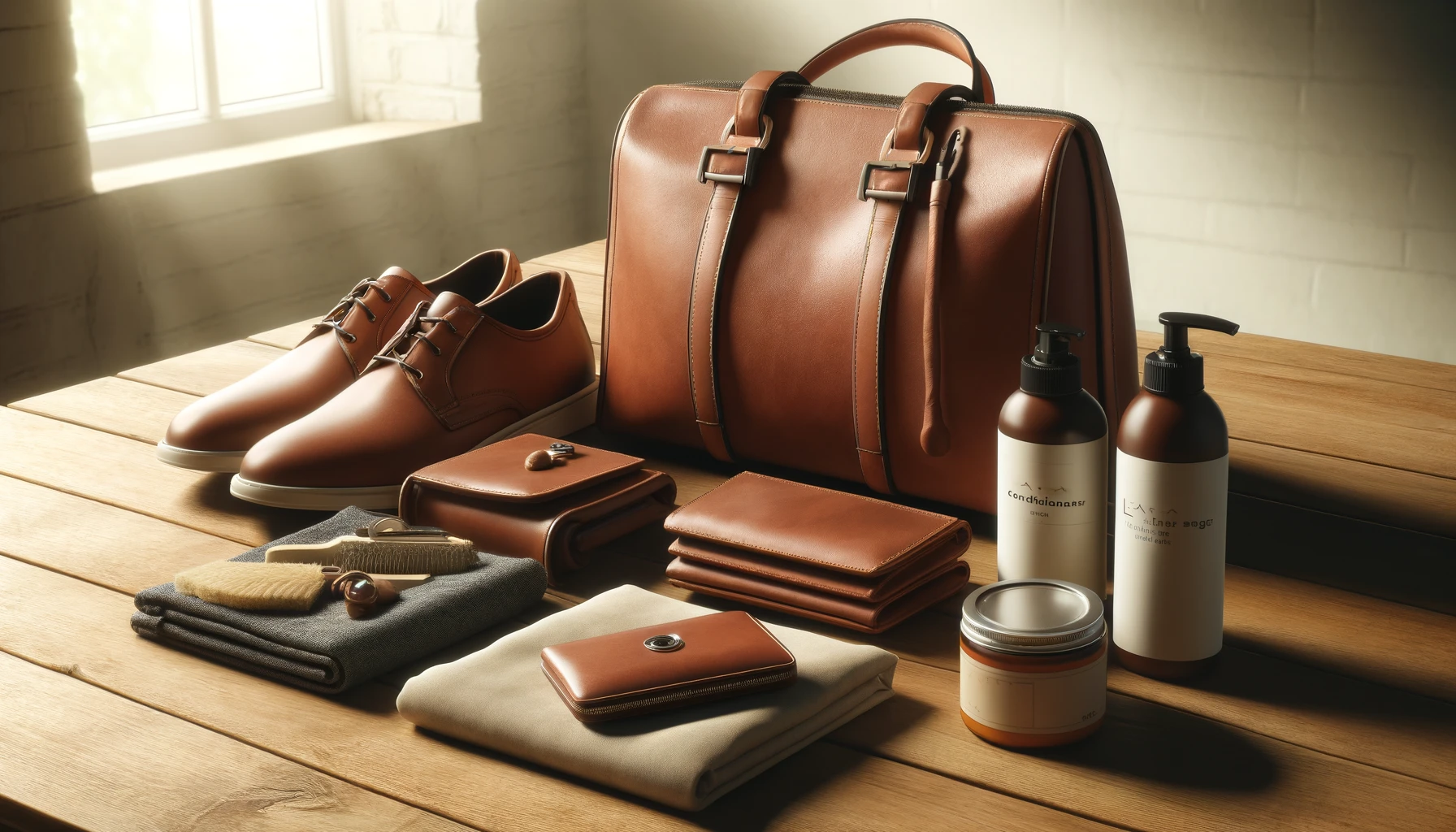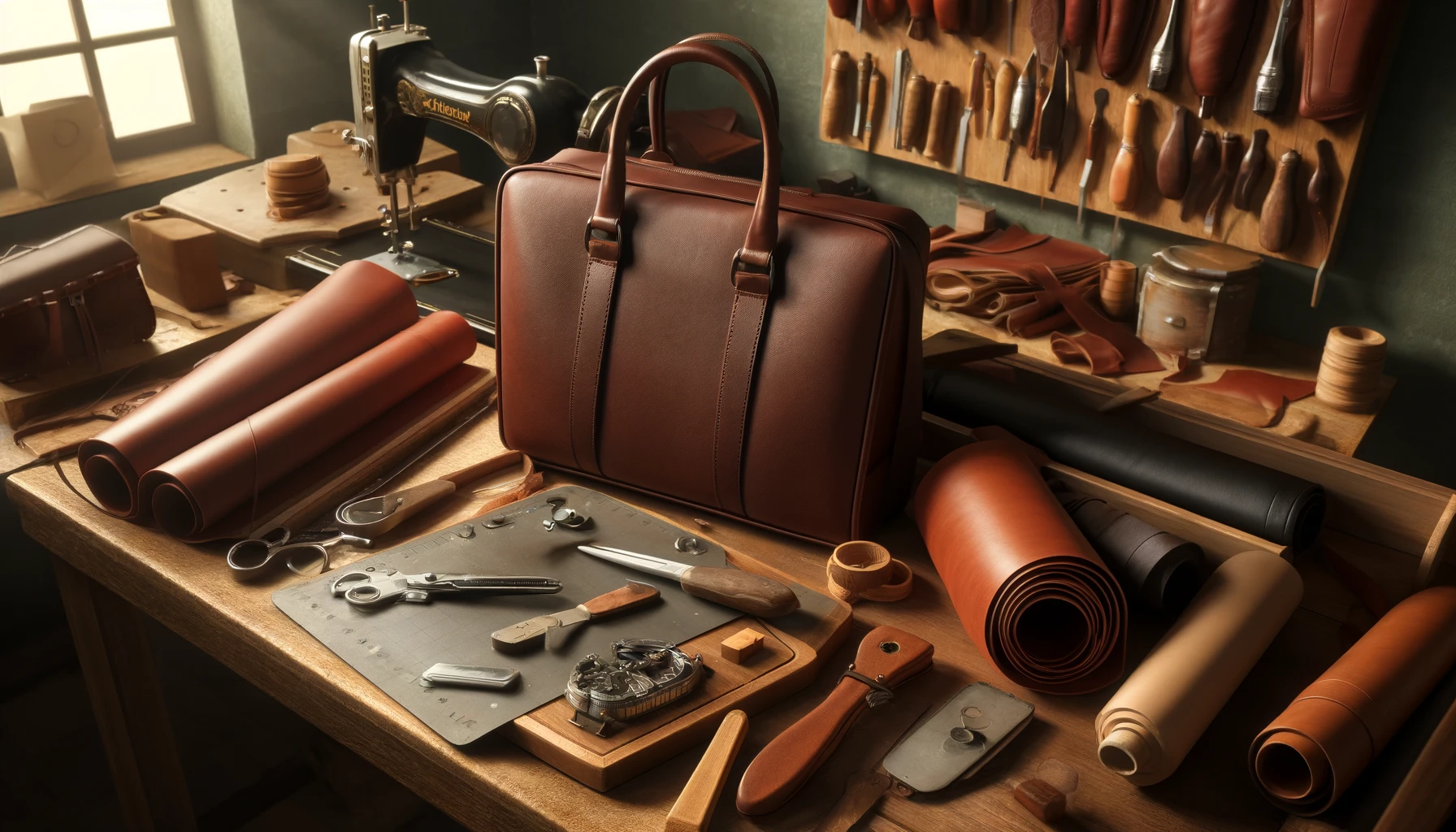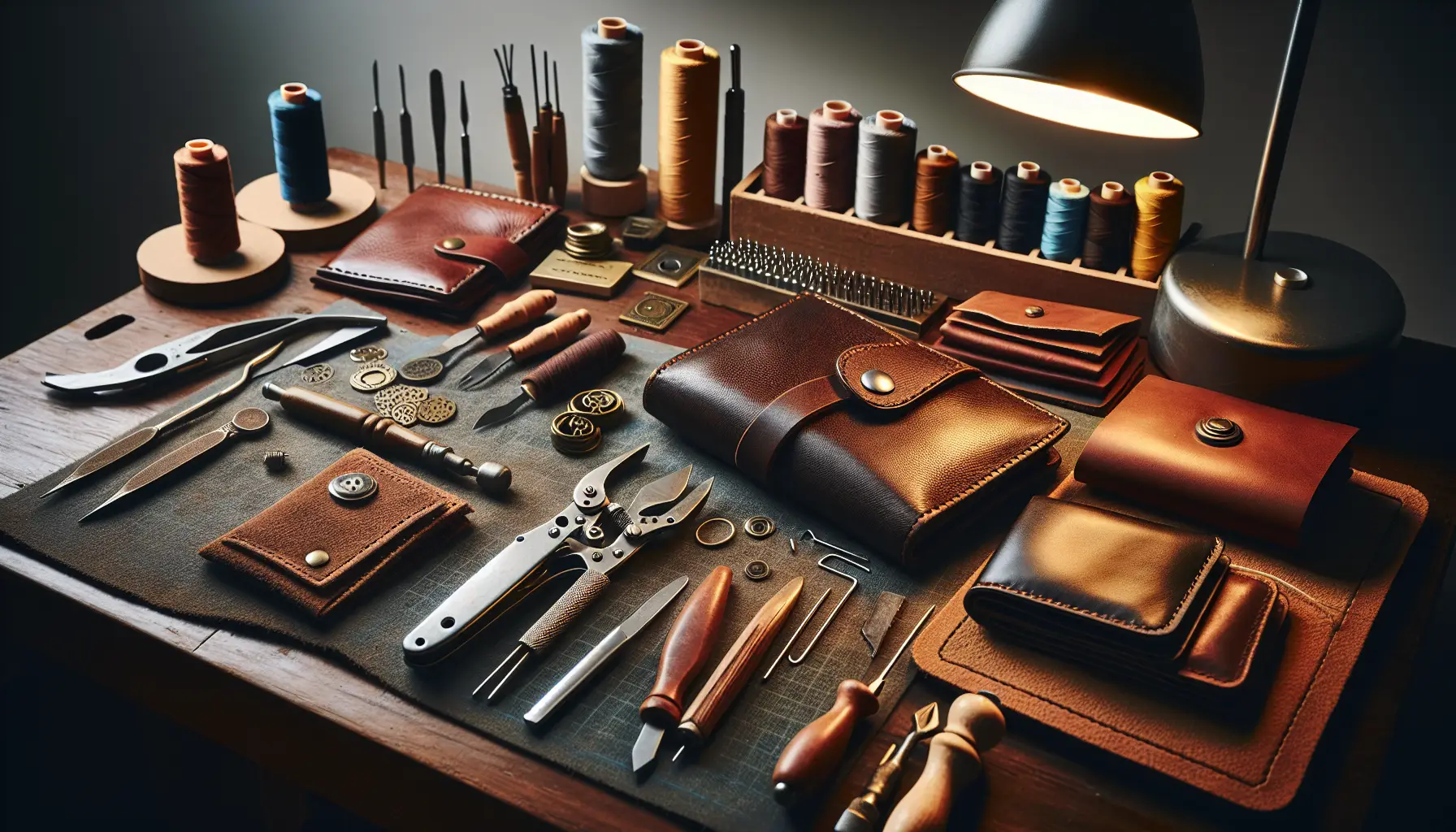Leather goods, whether a luxurious handbag, a stylish jacket, or a pair of timeless boots, are investments that deserve proper care and maintenance. With the right techniques and products, you can prolong the life of your leather items and keep them looking their best for years to come. This comprehensive guide will explore essential tips and tricks to help you maintain the beauty and durability of your leather goods.

Before diving into the care and maintenance of leather, it's essential to understand the material. Leather is a natural and durable material derived from the hides of animals, most commonly cows, sheep, and goats. As a porous and breathable substance, leather requires special attention to prevent drying, cracking, and discoloration.
Types of Leather
Full-Grain Leather: This is the highest quality leather, made from the top layer of the hide. It retains the hide's natural surface, making it very durable and attractive. However, it requires more careful maintenance to preserve its beauty.
Top-Grain Leather: Slightly lower in quality than full-grain leather, top-grain leather is sanded to remove imperfections. It is often more flexible and easier to handle but still requires regular care.
Corrected-Grain Leather: This type of leather has been treated to remove surface imperfections. It is often embossed to mimic natural grain but tends to be less durable than higher-grade leathers.
Bonded Leather: Made from leftover scraps of leather bonded together, this type is the lowest quality and does not last as long. It requires minimal maintenance but is also less desirable for high-quality goods.
Understanding these types of leather helps you tailor your care routine to the specific needs of each leather item you own.
Regular cleaning and conditioning are essential for maintaining the suppleness and luster of leather goods. Here are some tips to keep in mind:
Use the Right Tools: Always use a soft, dry cloth or a leather cleaner specifically designed for the type of leather you're working with. Avoid using harsh chemicals, as they can damage the material.
Gentle Cleaning: Gently wipe away dirt, dust, and stains, being careful not to rub too vigorously. For tougher spots, you can use a damp cloth with a small amount of mild soap. Always test any cleaning product on an inconspicuous area first to ensure it does not discolor the leather.
Drying: After cleaning, let the leather air dry naturally. Avoid using heat sources like hairdryers, which can cause the leather to become brittle and crack.
Choose a Quality Conditioner: After cleaning, apply a high-quality leather conditioner to nourish and protect the material. Conditioners help replace the natural oils that can be lost over time, preventing the leather from drying out and cracking.
Application: Use a soft cloth to apply the conditioner, working it into the leather in small circular motions. Allow the conditioner to be absorbed before buffing the surface with a clean cloth. Follow the instructions on the conditioner for best results.
Frequency: Condition your leather goods regularly, at least every few months, to keep them in optimal condition. However, the frequency may vary depending on the type of leather and how often the item is used.

Leather is susceptible to water damage and staining, so it's essential to take preventive measures:
Protective Sprays: Apply a water-repellent spray or cream to your leather goods, especially if you live in a humid or rainy climate. This will help create a protective barrier against moisture and prevent water stains.
Application Tips: Hold the spray about six inches away from the leather and apply an even coat. Allow it to dry completely before using the item. Reapply the spray periodically, especially after cleaning or conditioning.
Act Quickly: If a stain occurs, act quickly. Blot the area with a clean, dry cloth to absorb as much of the spill as possible.
Cleaning Stains: Use a leather cleaner or a mild soap and water solution to gently remove the stain. Avoid rubbing too vigorously, as this can spread the stain or damage the leather. For persistent stains, you might need a specialized leather stain remover.
Drying: Again, let the leather air dry naturally. Patience is key to preventing further damage.
Proper storage and maintenance are crucial for preserving the quality and appearance of your leather goods:
Cool and Dry: Store leather items in a cool, dry place, away from direct sunlight and heat sources. Excessive heat and humidity can cause leather to dry out and crack.
Breathable Storage: Use breathable storage bags or boxes to protect your items from dust and moisture. Avoid plastic bags, which can trap moisture and lead to mold growth.
Hanging and Laying Flat: For items like jackets, use padded hangers to help maintain their shape. Lay flat items like bags and boots with stuffing to preserve their form.
Regular Inspections: Regularly inspect your leather goods for signs of wear or damage. Address any issues promptly to prevent them from worsening.
Reshaping: If your leather item has lost its shape, you can gently reshape it by stuffing it with acid-free paper or a specialized leather shaper. This will help restore the item's original form and prevent creasing or folding.
Avoid Overloading: Be mindful not to overload your leather bags or wallets, as this can stretch and distort the leather over time.
As we continue exploring the intricacies of leather care, it's important to understand that different types of leather goods may require specific attention based on their use and exposure to various elements.
Leather goods, despite their durability, can encounter a range of issues over time. Here are some common problems and how to address them effectively:
Scratches and Scuffs:
Minor Scratches: For minor scratches, gently rub the affected area with your fingers. The natural oils in your skin can help blend the scratch into the leather.
Leather Oil or Conditioner: Apply a small amount of leather oil or conditioner to a soft cloth and gently buff the scratch. This can often help reduce its appearance by nourishing and blending the leather.
Professional Touch-Up Kits: Consider using a professional leather touch-up kit, which includes dyes and applicators specifically designed to repair scratches and scuffs.
Cracks and Dryness:
Deep Conditioning: If your leather has started to crack or dry out, a deep conditioning treatment can help restore its suppleness. Use a high-quality leather conditioner and allow it to penetrate the leather overnight.
Avoid Heat Exposure: Keep your leather goods away from direct heat sources, as heat can exacerbate dryness and lead to further cracking.
Discoloration and Fading:
UV Protection: To prevent discoloration and fading, store leather items away from direct sunlight. Consider using UV-protective sprays to shield your leather goods from harmful rays.
Color Restoration: For faded leather, there are color restoration products available that can help bring back the original hue. Follow the product instructions carefully to achieve the best results.
Mold and Mildew:
Immediate Cleaning: If you notice mold or mildew on your leather goods, clean the affected area immediately with a mixture of equal parts water and rubbing alcohol. Use a soft cloth to gently wipe away the mold.
Drying and Airing Out: Ensure the item is thoroughly dried and aired out to prevent mold from returning. Store in a well-ventilated area to avoid future issues.
Different environments can pose unique challenges to leather care. Here are some tips for protecting your leather goods based on your surroundings:
Humid Climates:
Desiccants: Use desiccants like silica gel packs in your storage areas to absorb excess moisture and prevent mold growth.
Frequent Airing: Regularly air out your leather items to reduce humidity buildup.
Cold Climates:
Conditioning: Cold weather can cause leather to become stiff and brittle. Regular conditioning can help maintain flexibility and prevent cracking.
Indoor Storage: Store leather items indoors during extremely cold weather to protect them from harsh temperatures.
Dusty Environments:
Regular Dusting: Dust your leather goods regularly with a soft, dry cloth to prevent buildup that can dull the surface.
Protective Covers: Use dust covers or bags for storage to keep items clean and free from dust accumulation.
In some cases, it may be necessary to seek professional help for leather care and repair. Here are scenarios where professional services can be invaluable:
Deep Cleaning:
Stubborn Stains: Professional leather cleaners have access to specialized equipment and techniques to remove stubborn stains that home cleaning methods cannot address.
Overall Maintenance: Periodic professional cleaning can help maintain the leather’s appearance and prolong its life, especially for high-use items like sofas and car seats.
Repairs:
Significant Damage: If your leather item has sustained significant damage, such as tears, deep cracks, or severe discoloration, a professional leather repair service can often mend the item and extend its lifespan.
Structural Issues: For items like leather furniture or bags with structural issues, professionals can provide the necessary repairs to restore functionality and aesthetics.
Restoration:
Vintage and Antique Items: For vintage or antique leather goods, professional restoration services can help preserve the item's historical value and maintain its integrity. These experts use techniques that are gentle on old leather and effective in restoring its original beauty.
Recoloring and Refinishing: Professionals can also offer recoloring and refinishing services to rejuvenate leather items that have lost their luster or have become faded over time.
While many leather care tasks can be handled at home with the right tools and techniques, there are distinct advantages to seeking professional care:
DIY Care:
Cost-Effective: Home care methods are often less expensive and can be effective for routine maintenance and minor issues.
Convenience: Regular at-home care can prevent many problems from developing, keeping your leather goods in good condition without the need for frequent professional intervention.
Professional Care:
Expertise: Professionals have the experience and knowledge to handle complex leather care issues, ensuring the best possible outcome for your items.
Advanced Techniques: Access to specialized equipment and products allows professionals to achieve results that are difficult to replicate at home.
By balancing DIY care with professional services, you can ensure that your leather goods receive the comprehensive care they need to remain beautiful and functional for years to come.
Proper leather care is an ongoing process that requires attention to detail and consistency. Let’s explore additional tips for long-term leather maintenance, delve into the benefits of various leather care products, and discuss how to build a comprehensive leather care routine that ensures your leather goods remain in excellent condition for years to come.
Creating a regular maintenance schedule is crucial for keeping your leather items in pristine condition. Here's a suggested routine to help you stay on top of leather care:
Weekly Maintenance:
Dusting and Wiping: Use a soft, dry cloth to dust and wipe down your leather goods. This simple step prevents dirt buildup and keeps the leather surface clean.
Spot Cleaning: Address any spills or minor stains immediately using a damp cloth and mild soap solution. Remember to blot rather than rub to avoid spreading the stain.
Monthly Maintenance:
Conditioning: Apply a leather conditioner once a month to keep the leather supple and prevent drying and cracking. Follow the product instructions for the best results, ensuring even coverage across the entire surface.
Inspection: Conduct a thorough inspection of your leather items for any signs of damage, such as scratches, cracks, or discoloration. Early detection allows for timely intervention and prevents further deterioration.
Biannual Maintenance:
Deep Cleaning: Perform a deep cleaning of your leather goods twice a year. Use a specialized leather cleaner to remove embedded dirt and grime, followed by conditioning to restore moisture and suppleness.
Professional Check-Up: Consider taking your most valuable leather items to a professional cleaner or repair service for a thorough check-up and any necessary repairs. This proactive approach can extend the life of your leather goods.
Selecting the right leather care products is essential for effective maintenance. Here are some recommended products and their benefits:
Leather Cleaners:
Mild Leather Cleaners: Ideal for regular cleaning, these products remove dirt and stains without harming the leather. Look for pH-balanced formulas that are safe for all types of leather.
Deep Cleaners: These are designed for more intensive cleaning, removing deep-seated dirt and grime. They are particularly useful for older or heavily used leather items.
Leather Conditioners:
Cream Conditioners: These provide deep nourishment and hydration, making them suitable for all types of leather. They help maintain the leather’s natural oils and prevent drying.
Oil Conditioners: Best for thicker, more rugged leathers, oil conditioners offer intense moisture and protection. They are ideal for items like boots and saddles that face harsh conditions.
Protective Sprays and Creams:
Water Repellent Sprays: These create a barrier against moisture, preventing water damage and stains. They are essential for leather goods used in wet or humid environments.
UV Protection Creams: These products protect leather from UV rays, preventing discoloration and fading. They are particularly useful for items frequently exposed to sunlight.
Beyond regular cleaning and conditioning, here are some additional tips to help preserve your leather goods over the long term:
Avoid Overexposure to Sunlight:
Prolonged exposure to direct sunlight can cause leather to fade and become brittle. Store your leather items in shaded areas or use UV-protective products to shield them from sun damage.
Maintain Optimal Humidity Levels:
Leather thrives in environments with moderate humidity. Excessive dryness can lead to cracking, while too much humidity can cause mold and mildew. Use humidifiers or dehumidifiers to maintain optimal conditions, especially in storage areas.
Rotate Your Leather Goods:
If you have multiple leather items, rotate their use to prevent excessive wear on any single piece. This practice helps distribute the stress and extends the life of each item.
Handle with Clean Hands:
Natural oils and dirt from your hands can transfer to leather, causing stains and degradation. Always handle your leather goods with clean hands to minimize this risk.
Use Acid-Free Tissue Paper:
When storing leather items, especially bags and shoes, stuff them with acid-free tissue paper. This helps maintain their shape and prevents creases and folds.
To ensure the longevity of your leather goods, build a comprehensive care routine that incorporates all the elements discussed. Here’s a step-by-step guide to creating your routine:
Assessment:
Evaluate the types of leather items you own and their specific care needs.
Identify any existing damage or areas requiring immediate attention.
Product Selection:
Choose appropriate leather cleaners, conditioners, and protective products based on your assessment.
Invest in high-quality products to ensure the best care for your leather goods.
Routine Establishment:
Create a cleaning and conditioning schedule tailored to your items' needs.
Incorporate weekly, monthly, and biannual maintenance tasks.
Storage Solutions:
Set up proper storage solutions, including breathable bags, dust covers, and climate control measures.
Ensure items are stored in a cool, dry place away from direct sunlight.
Regular Inspections:
Conduct regular inspections to detect early signs of wear and address them promptly.
Keep a log of maintenance activities and any repairs performed.
Professional Care:
Schedule periodic visits to professional cleaners and repair services for your most valuable leather goods.
Seek expert advice for any complex issues or restoration needs.
Leather goods are timeless investments that require diligent care to maintain their beauty and functionality. By understanding the unique characteristics of leather, following a structured maintenance routine, and using the right products, you can extend the life of your leather items and keep them looking pristine.
Whether you're dealing with everyday wear and tear or more significant damage, the tips and techniques outlined in this guide provide a comprehensive approach to leather care. From regular cleaning and conditioning to professional repairs and long-term preservation, every step you take contributes to the longevity and elegance of your leather goods.
At Leatherly, we are committed to helping you maintain your leather items with the utmost care and expertise. Explore our range of high-quality leather care products and services to ensure your beloved leather pieces remain in excellent condition for years to come.
By following these guidelines and investing in proper leather care, you can enjoy the enduring beauty and durability of your leather goods, making them cherished items in your collection for a lifetime.

